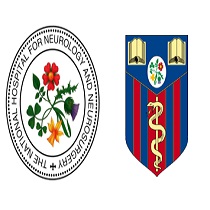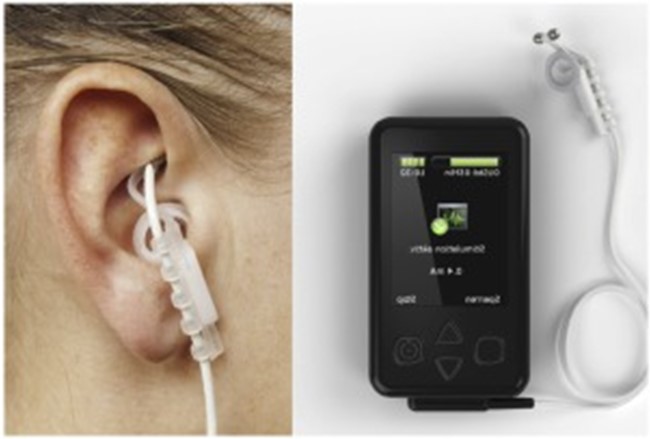Transcranial
alternating current stimulation (tACS) provides moderate cognitive
benefits in healthy older adults as well as those with neuropsychiatric
disorders, results of the largest and most comprehensive meta-analysis
of tACS to date show.
"tACS has shown great promise at enhancing
mental function, but whether this technology can truly fulfill its
promise has been a topic of considerable debate in the field of brain
stimulation," senior investigator Robert Reinhart, PhD, with the
Cognitive & Clinical Neuroscience Laboratory, Boston University,
told Medscape Medical News.
Given conflicting evidence
on tACS for boosting cognition, Reinhart and colleagues leveraged
statistical meta-analytic techniques to quantify how consistent the
evidence is across several studies.
The time was right to do this,
Reinhart said, as the number of tACS studies has "more than doubled
since the previous meta-analysis and tACS designs have rapidly evolved,
becoming increasingly sophisticated."
The study was published online May 24 in Science Translational Medicine.
Significant, Immediate Improvement
The
analysis included 102 studies of tACS in healthy individuals as well as
those with neurological or psychiatric conditions published between
2006 and 2021.
Together, these studies involved 2893 participants
(1290 men and 1603 women) with a mean age of 30 years; 333 participants
were older (mean age 67 years).
A total of 177 participants had a clinical disorder such
as major depressive disorder, attention deficit hyperactivity disorder
(ADHD), epilepsy, Parkinson's disease, schizophrenia, and mild cognitive
impairment.
When compiling over 300 measures of mental function
across all the studies, there was evidence for significant, reliable,
and immediate improvement in mental function with tACS, Reinhart told Medscape Medical News.
When
examining specific mental functions separately — such as memory,
attention, or intelligence — tACS produced the strongest improvement in
executive control, or the ability to adapt behavior in the face of new,
surprising, or conflicting information, he noted.
"We also found improvements in the ability to pay attention, the
ability to memorize information for both short and long periods of time,
as well as in measures of intelligence. Together, these results suggest
that tACS has the ability to particularly improve specific kinds of
mental function, at least in the short term," Reinhart said.
To establish the effect of tACS in people who might most
need it, the researchers examined how tACS impacted mental function in
two subpopulations which may be particularly vulnerable to brain
changes: older adults and clinical populations.
"In
both subpopulations, we found reliable evidence for improvements in
mental function with tACS. Interestingly, we also found that in
specialized tACS, which can target two brain regions at the same time,
manipulating the relationship between the two regions can both enhance
or reduce mental function," Reinhart told Medscape Medical News
This bidirectional regulation of mental function could be particularly useful in the clinic, he noted.
"For
example, conditions like depression may involve reduced
reward-processing capabilities while others like bipolar disorder may
involve a highly active reward-processing system. With the capability to
change mental function in either direction, we may be able to flexibly
develop targeted designs to cater to specific clinical needs," Reinhart
said.
The
researchers caution that while the analyses suggest immediate
enhancements in cognitive function with tACS, they do not speak to the
sustainability of these improvements. The durability of cognitive
changes is a key question for future studies.
"Great Potential" but Questions Remain
Commenting on this research for Medscape Medical News,
Shaheen Lakhan, MD, PhD, a neurologist and researcher in Boston, said
tACS has shown "great potential" in modulating brain systems and
circuits. "However, it is important to note that tACS is still in the
early stages of development and requires further refinement."
"Before
tACS can become widely applicable, several crucial aspects need to be
addressed. Firstly, we need to determine the specific brain regions that
should be targeted for optimal results. Additionally, we must identify
which types of individuals would benefit the most from this technology,"
said Lakhan, who was not involved in the meta-analysis.
"Moreover,
it is crucial to ascertain whether the benefits observed in controlled
experiments truly translate into real-life scenarios such as driving a
car, work performance, academic achievements, and improved social
relationships. It is one thing to witness improvements on brain tests,
but it is essential to understand the practical implications of these
enhancements," Lakhan commented.
He
said he envisions "a combination of drugs, devices, and applications
will work together harmoniously within a closed system to modulate the
brain, specifically targeting and alleviating conditions like
depression, anxiety, and hyperactivity."
"However,
this advancement raises profound questions about the boundaries between
clinical use and neuro-enhancement, challenging our existing social
constructs," said Lakhan.
"Our
personalities, to a certain extent, are shaped by the intricate networks
within our brains. Remarkably, our brain signatures can reveal aspects
of our character, including agreeableness, openness, conscientiousness,
neuroticism, and even our political affiliations," he added.
"As
we venture into this exciting realm of brain unlocking and
manipulation, it is imperative that we approach it with caution, ethical
considerations, and a deep understanding of the potential
consequences," Lakhan said.
"Only
through responsible exploration and careful navigation can we fully
harness the power of these technologies while respecting the
complexities of our individual identities and the broader social
implications they entail," he added.
This
work was supported by grants from the National Institutes of Health and
a gift from an individual philanthropist. Reinhart and Lakhan report no
relevant financial relationships.
Sci Transl Med. Published online May 24, 2023. Abstract




